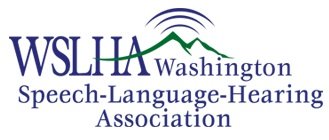Cost: Member - $35 | Non-Member - $50
Live Session only, no recording of this presentation | Registration will close on December 13th at 9am
About the Event:
Any disorder that interferes with normal velopharyngeal movement is referred to as velopharyngeal dysfunction (VPD). VPD is an umbrella term that can be broken down further based on etiology. The type of VPD most speech pathologists are familiar with is velopharyngeal insufficiency (VPI). The etiology of VPI is structural in nature and is often associated with cleft and craniofacial conditions. When VPI is present, velopharyngeal movement may occur, but the port remains open to some degree for all phonemes, resulting in perception of hypernasality and nasal air emission. Given the structural cause, VPI management requires a physical change to the structures, either through surgery or a prosthetic appliance.
Other times hypernasality and nasal air emissions are present, the etiology may be functional or neurogenic in nature. In these cases, surgical intervention is often not warranted as the VPD is related to learned articulation errors or an associated motor speech disorder. Accurate differential diagnosis of the type of velopharyngeal dysfunction (VPD) present is crucial in determining a management plan that will lead to an improvement in speech and resonance characteristics.
Aside from velopharyngeal function, other craniofacial structural differences can also interfere with typical speech sound production. Occlusal or other oral structural differences such as an underbite, a fistula, or palatal expander should also be considered when identifying therapy targets.
The primary goal of this course is to provide a framework to make informed diagnoses, to establish effective therapy plans, and to make appropriate referrals. Presenters will emphasize the importance of the perceptual characteristics of VPD in addition to diagnostic therapy in determining the source(s) of hypernasality and nasal air emission. Video and audio recordings will be used to illustrate concepts and case examples will provide listening practice for the audience.
Presenters: Sara Kinter, PhD, CCC-SLP and Lauren Beckett, MS, CCC-SLP
Learning Objectives:
Describe role of phoneme distinctive features in differential diagnosis and treatment planning.
Define perceptual speech characteristics and management options for each etiology of velopharyngeal dysfunction.
Identify speech characteristics consistent with other structural differences.
About the Presenters:
Dr. Kinter has specialized in speech disorders associated with craniofacial conditions for nearly 20 years, earning her Master of Arts degree in speech-language pathology at Northwestern University. She has presented on velopharyngeal dysfunction to local, regional, and national audiences since 2008 and has been an invited presenter at both the ASHA Annual Convention as well as the American Cleft Palate-Craniofacial Association’s Annual Meeting. She is currently the lead speech-language pathologist with the Seattle Children’s Craniofacial Center and an acting assistant professor with the Dept of Pediatrics, Division of Craniofacial Medicine at the University of Washington. Dr. Kinter earned her doctorate in Epidemiology at the University of Washington and actively participates in multi-center speech outcomes studies in children with a cleft palate. Her own research focuses on the application of epidemiologic methods to the study of speech and surgical outcomes in children with craniofacial conditions.
Disclosures: Financial: employed by University of Washington and Seattle Children’s Hospital | Non-Financial: nothing to report
Lauren Beckett, MS, CCC-SLP: Ms. Beckett has specialized in speech disorders associated with craniofacial conditions and velopharyngeal dysfunction for five years. She earned her master’s degree in speech-language pathology at the University of Utah. While in graduate school, she was a research assistant for the Americleft Speech Project and completed a master’s thesis on speech and language outcomes of toddlers with cleft lip and palate. Since graduating, Lauren has worked at three different pediatric hospitals as part of multi-disciplinary craniofacial teams. She is currently part of the Seattle Children’s Craniofacial Center where she provides both perceptual and instrumental speech evaluations as well as treatment for patients with velopharyngeal dysfunction and complex motor speech disorders. Lauren is involved in two multi-center studies examining speech outcomes in children with cleft palate and has completed expert trainings on rating perceptual speech characteristics in children with craniofacial conditions.
Disclosures: Financial: is employed by Seattle Children’s Hospital | Non-Financial: nothing to report.
Intermediate Level – 0.15 ASHA CEUs
OSPI Clock Hours – 1.5 hours
WSLHA charges a processing fee of $5.00 for ASHA CEUs ($7.00 non-members) and $5.00 for clock hours payable prior to the workshop.
Credits must be purchased prior to the program. Any requests for credits after the date of each workshop will be denied.


